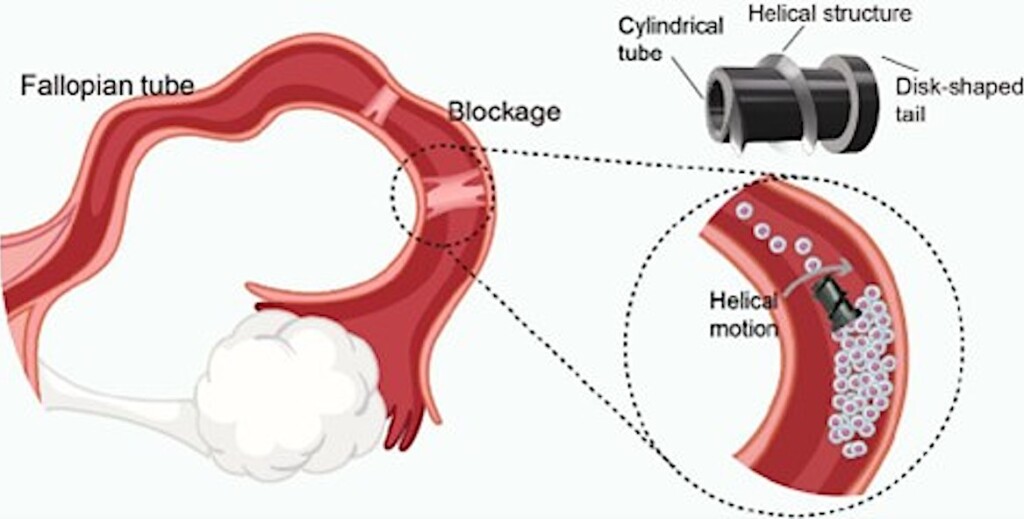
Tens of millions of people around the world affected by infertility due to blocked fallopian tubes could soon benefit from a tiny robotic screw that can clear the passage.
Researchers from the Shenzhen Institutes of Advanced Technology (SIAT) developed the innovative solution using a magnetically driven robotic microscrew to treat fallopian tube blockages.
“This new technology offers a potentially less invasive alternative to traditional surgical methods currently used to remove tubal blockages, which often involve the use of conventional catheters and guidewires,” said author Haifeng Xu in the study published in AIP Advances.
The microrobot is made from a non-magnetic photosensitive resin, covered with a thin layer of iron to give it magnetic properties. By applying an external magnetic field, the robot rotates, generating translational motion that allows it to navigate a glass channel designed to simulate a fallopian tube.
The robot succeeds in removing the obstruction from the clusters of cells placed in the canal, imitating a typical blockage of the female reproductive system. This magnetic control allows precise navigation through the delicate and narrow structures of the fallopian tube.
The microrobot design is another key innovation for the team working in SIAT’s Soft Magnetic Microrobot Laboratory. It has a screw-shaped body with a helical structure, a cylindrical central tube and a disc-shaped tail.
The propeller-shaped structure is crucial for propulsion, while the disc-shaped tail helps stabilize the robot’s movement. As the screw rotates, it generates a vortex field that helps push fragmented debris toward the tail, clearing the blockage more effectively.
In testing, the microrobot demonstrated both effectiveness and efficiency in clearing simulated blockage, the vortex created by the rotating screw propelling debris away from the obstruction.
Looking to the future, the research team plans to make the microrobot smaller and more advanced. They also aim to test the robot on isolated organ models and integrate in vivo imaging systems to track the movement and position of the microrobot in real time.
The team also plans to expand the robot’s applications in surgery, including with automatic control systems that could improve the efficiency of clearing blockages and other medical procedures.
INCREDIBLE BODY: Remarkable first mapping of limb development shows stages of creating masterpiece of human hand
“The ultimate goal is to provide a more effective and minimally invasive solution for patients suffering from infertility,” Xu said.
SHARE INCREDIBLE INNOVATION on social media…
